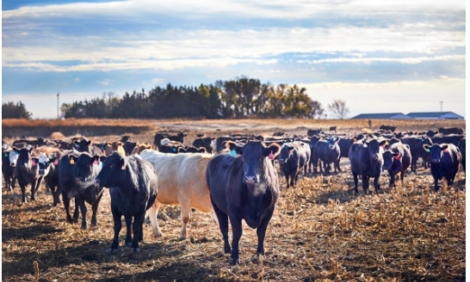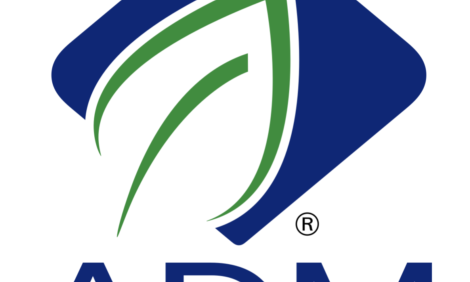



New Concept to Prevent Health Problems in Dairy Sector
EU - According to Janne Rothmann Holm, Aarhus University, and Thomas Andersen, SEGES, with a new approach to the HACCP concept, farmers can detect and solve health problems at an early stage. This creates a basis for more sustainable production for the benefit of both farmers and consumers. An EU project is currently working on adjusting the concept for the management of cow health.Quality of life is a key concept in the overall strategy on a dairy farm and an important aspect of quality of life is the income and time devoted to activities outside the farm. This has led to increased herd size to gain large-scale production advantages. In this development process the farmer has met an increased focus on sustainability from the community. There has to be extra focus on the environmental footprint as well as animal welfare and health.
It demands good management skills and an ability to adapt know-how and tools to develop and run a sustainable dairy production unit. This calls for management tools, for example HACCP, a concept where major risks in the production system are monitored and this monitoring is documented and responded to.
HACCP is widely used for quality assurance in the food chain, primarily related to physical, microbiological or chemical contamination. Some farmers have come across the HACCP concept if they are using feed additives or premixes and thereby need to follow the European regulation on hygiene of foodstuffs. The experience from the food chain is that it demands a massive effort to develop and implement a farm specific HACCP but afterwards it is easy to use and has many advantages in surveillance and handling risk factors.
The HACCP concept
HACCP is short for Hazard Analysis and Critical Control Points. The system is a risk-based management system with a preventative approach. HACCP aims to identify problems before they occur rather than an end-point testing system. With HACCP we want to control the risk factors of a disease rather than controlling the disease. These risk factors are controlled by monitoring identified critical control points within the production system.
The first point in HACCP is the hazard analysis where all hazards are identified. A hazard is a condition or disease that may compromise the cow’s health and welfare or is unacceptable to consumers or products. In a hazard analysis all potential hazards should be identified on the basis of a mapping of the processes on the farm. If the hazard has a high likelihood and high severity there should be a specified critical control point.
The critical control point should be described with a procedure to monitor the control point and description of actions to be implemented if the monitoring shows a high level on the critical control point. In connection to the HACCP there should be a defined procedure for ensuring the HACCP system is working as intended and a system for record keeping.
Negative energy balance – an example of the use of HACCP
A hazard could be negative energy balance, where the feed ration does not fit the requirements for nutrients. In the case of negative energy balance the cow mobilizes body reserves in support of lactation and therefore loses weight. Negative energy balance is a normal situation in the first part of the lactation of all dairy cows, but for some cows the energy balance is too excessive and becomes a serious health risk. The cow may have clinical or subclinical ketosis and an increased risk of being culled before the next lactation.
In a HACCP process there are identified Critical Control Points to monitor the hazard. With the hazard negative energy balance a critical control point could be the level of Beta-Hydroxy Butyrate (BHB) measured in blood or milk. BHB is one of the ketone bodies formed in the cow when she is in negative energy balance.
Measurement has shown that the concentration of BHB in blood or milk is related to negative energy balance if the blood glucose level is relatively low. This means it can be used as a critical control point. If the level of BHB is high and glucose too low, corrective actions needs to be launched. The necessary action depends on the situation but it could be increased energy level in the feed ration by reformulation of the ration or administration of propylene glycol to the cow.
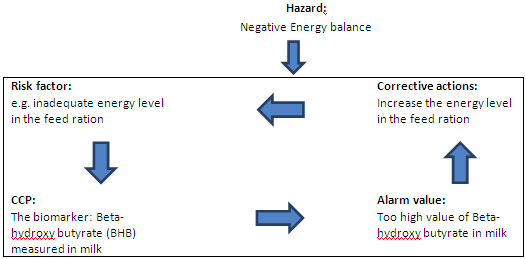
Documentation is the last step in a HACCP based surveillance system. In the example with BHB the monitoring could be done automatically in the milking system. The documentation can be done with saving all the measurements.
Generic HACCP approach
In a traditional HACCP definition a HACCP has to be developed specifically for the system that it is monitoring. This gives an extremely high safety rating when monitoring food production. But it also demands a team of specialists to analyze all sides of the farm. A generic approach, where the hazards and the critical control points are predefined, will give a system where implementation can be done with a small team. A small team could be the farmer and advisers who know the farm routines (e.g. veterinarian and nutritionist) supplemented with an advisor with knowledge of the generic HACCP concept.
Research project working with HACCP
In the EU project GplusE scientists, farmer organizations and industry from 6 EU countries, the USA and China aim to optimize production efficiency, the environmental footprint and the health and welfare of dairy cows. One of the focus areas is the adaption of HACCP principles into a generic management practice that can be tested on ordinary dairy farms. The work is ongoing and the project aims to have the management practice tested on dairy farms in 2018.
Largescale dairy production demands a systematic management practice. In the EU project "GplusE" scientists, farmer organizations and industry aim to optimize production efficiency, the environmental footprint and the health and welfare of dairy cows. One of the focus areas is the use of a HACCP inspired tool to improve the management level of dairy production.
The seven principles of HACCP
HACCP builds on 7 principles combining risk assessment, risk management and documentation.
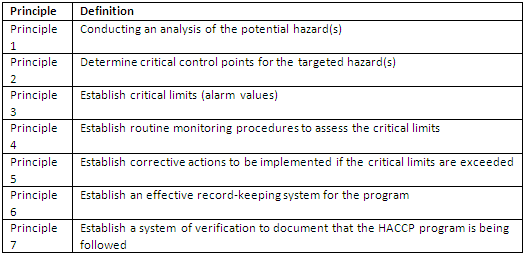
Steps for implementing HACCP
The 7 principles of HACCP are systematic implementing in the HACCP system by following 12 steps.
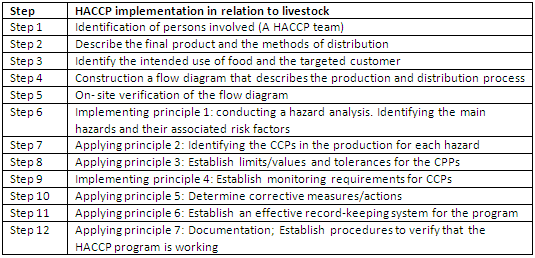
TheCattleSite News Desk

